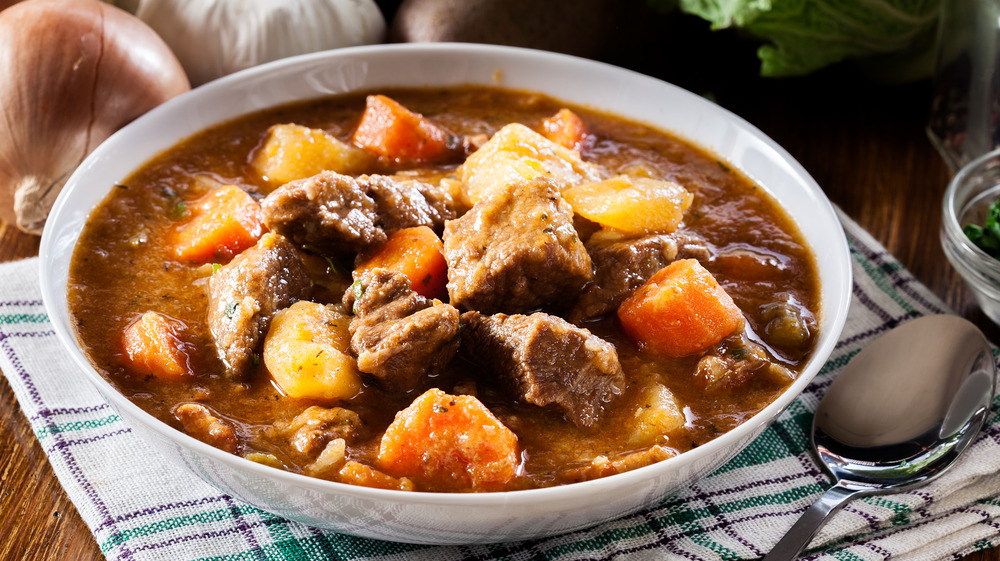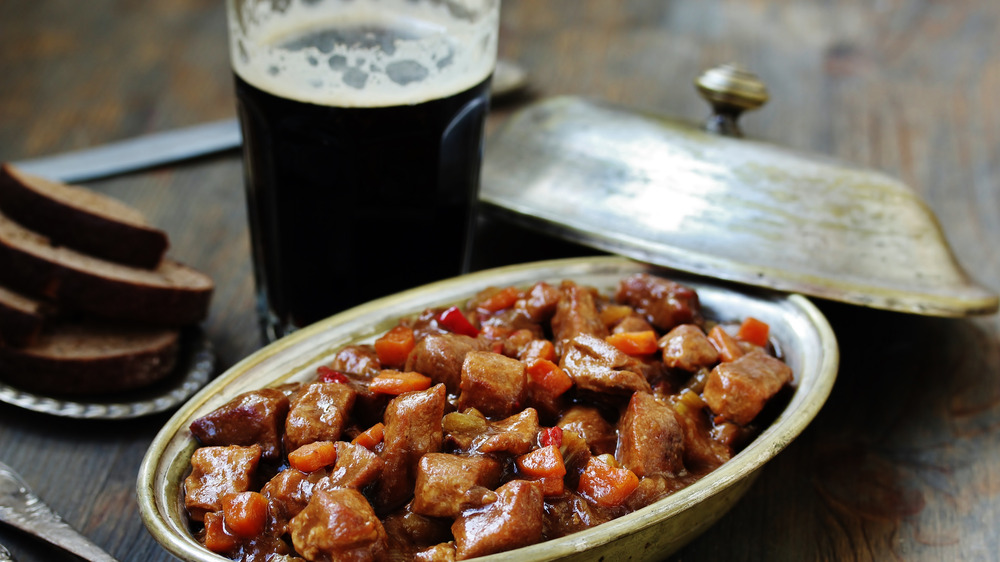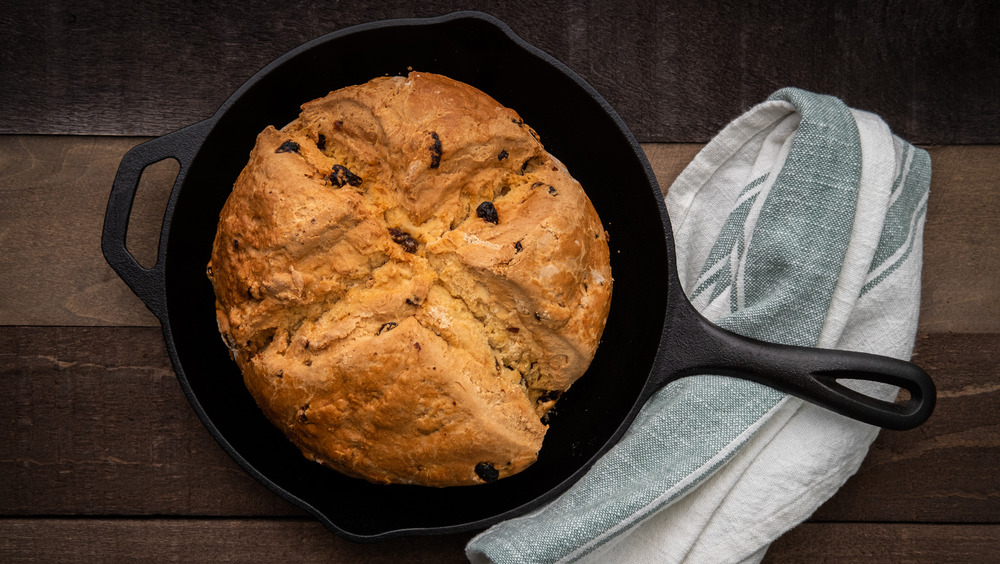Myths About Irish Food You Can Stop Believing
Think you know everything about Irish food? Think again, because many of the things you may think you know actually aren't factually true! Here are just a handful of myths busted!
One might be inclined to think that the Irish have always eaten potatoes. Well, there were no potatoes in ancient Ireland. Irish food historian Máirtín Mac Con Iomaire told Irish Central that the Ancient Irish were primarily hunter-gatherers who subsisted on foraged foods, like berries, garlic, and watercress. They also consumed wild birds and game, along with shellfish and seafood caught along the seashore and rivers (via The Independent).
It wasn't until the late 16th century that potatoes became a large part of Irish food culture. According to History Ireland, it isn't clear exactly who introduced potatoes to Ireland, though rumors suggest Sir Walter Raleigh. However, they start to appear around 1580-1590 after explorers discovered them in the New World and brought them back to Europe. Potatoes grew in popularly as an easy crop to grow and an inexpensive food source for the working class. But prior to that, the Irish primarily grew grains like wheat and barley, eaten either in baked goods or porridge.
We don't always remember Irish traditions accurately
Is Guinness good for you? In the early 20th century, Guinness promoted itself as a health tonic with ad slogans saying, "Guinness is good for you. (via CNN). And there's some truth to that, as it does contain a lot of nutrients and antioxidants and is one of the more fiber-rich beers on offer, as well as coming in at 125 calories per 12-ounce pour. Because of its high iron content, it was often even suggested to pregnant women to drink Guinness to help supplement their iron intake, according to the Royal College of Physicians. But while there are some arguable benefits according to BBC Health, Guinness is still beer, and the negative effects of excessive alcohol consumption apply. Moreover, according to Royal College of Physicians advisor Sir Ian Gilmore, "There is no evidence to suggest that the health of non-drinkers will improve if they start drinking alcohol."
Moving from traditional drinks to traditional eats, people may believe corned beef and cabbage is the quintessential Irish meal. Despite its exalted status in American St. Patrick's Day celebrations, corned beef and cabbage is actually not commonly eaten in Ireland. As Smithsonian Magazine reports, beef, in general, was too expensive and was the food of the upper classes. Instead, most people ate bacon butchered from the pigs they raised themselves. It wasn't until the Irish immigrated to the United States in the late 19th and early 20th centuries that they found that the price of beef was cheaper than bacon and made the switch.
In case of doubt, blame the fairies
You may have assumed or even been told that the cross on the top of Irish soda bread is meant to help with baking or even an allusion to Christian symbolism and a sign to ward off the devil. And in fairness, the cut actually does aid the baking process. But according to OwlCation it actually had a much more ancient reason: mischief fairies. Even the renowned Ballymaloe Cookery School in County Cork, in its soda bread recipe, instructs the baker to "cut a cross on it to let the fairies out!" As Ballymaloe founder Darina Allen said to The Daily Beast, "It lets the fairies out of your bread—that's properly important because the fairies are always up to mischief here in Ireland and are blamed for all sorts of things."
Notes The New York Times, if you don't let the fairies out, they will put a curse on your bread. And in traditionally superstitious Ireland, you definitely want to avoid that! It's not a surprise that a land of so many legends like Ireland would have myths about food and that tall tales and stories of fairies invade the recipes. It keeps Ireland just that extra little bit magical.


